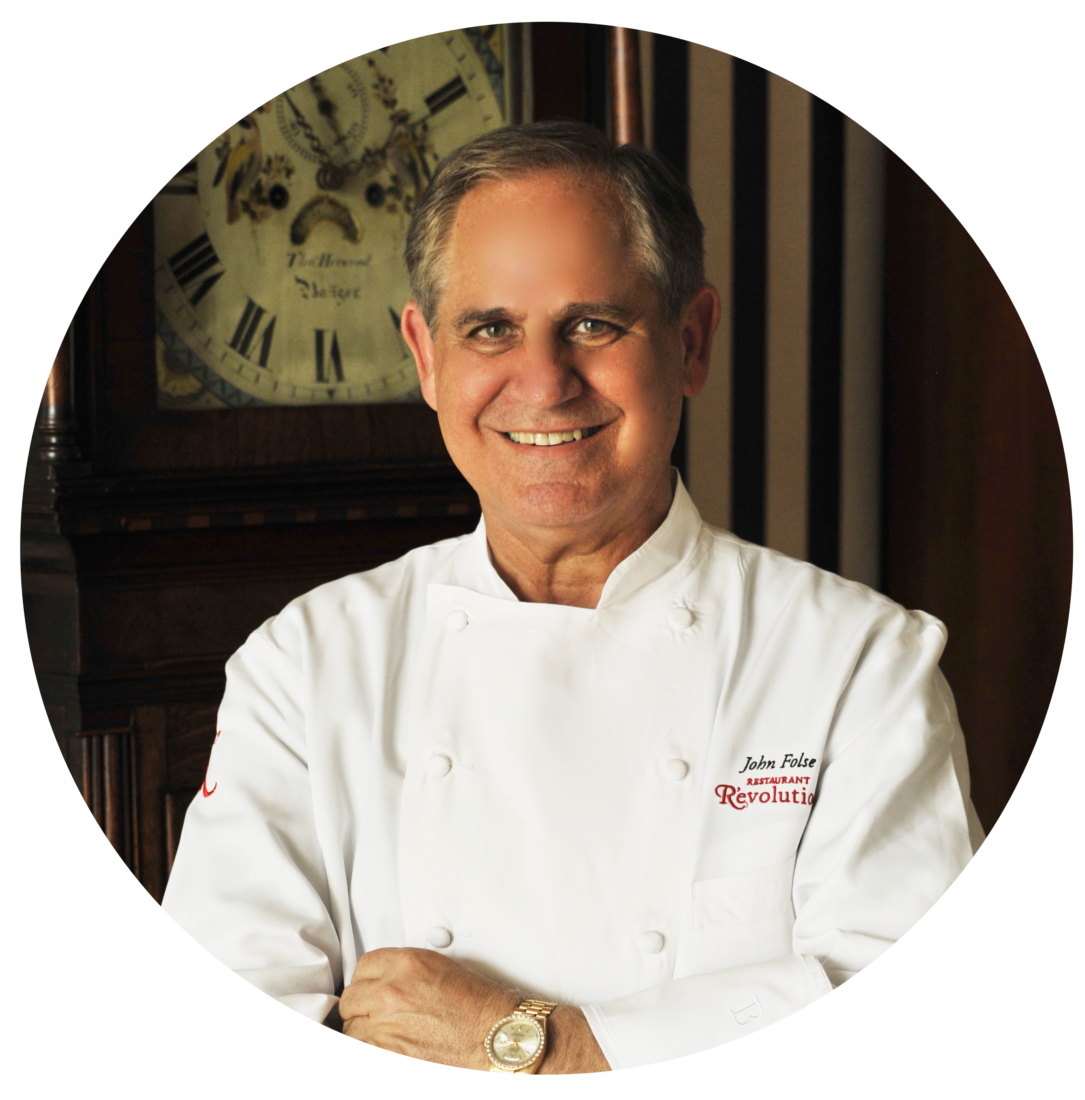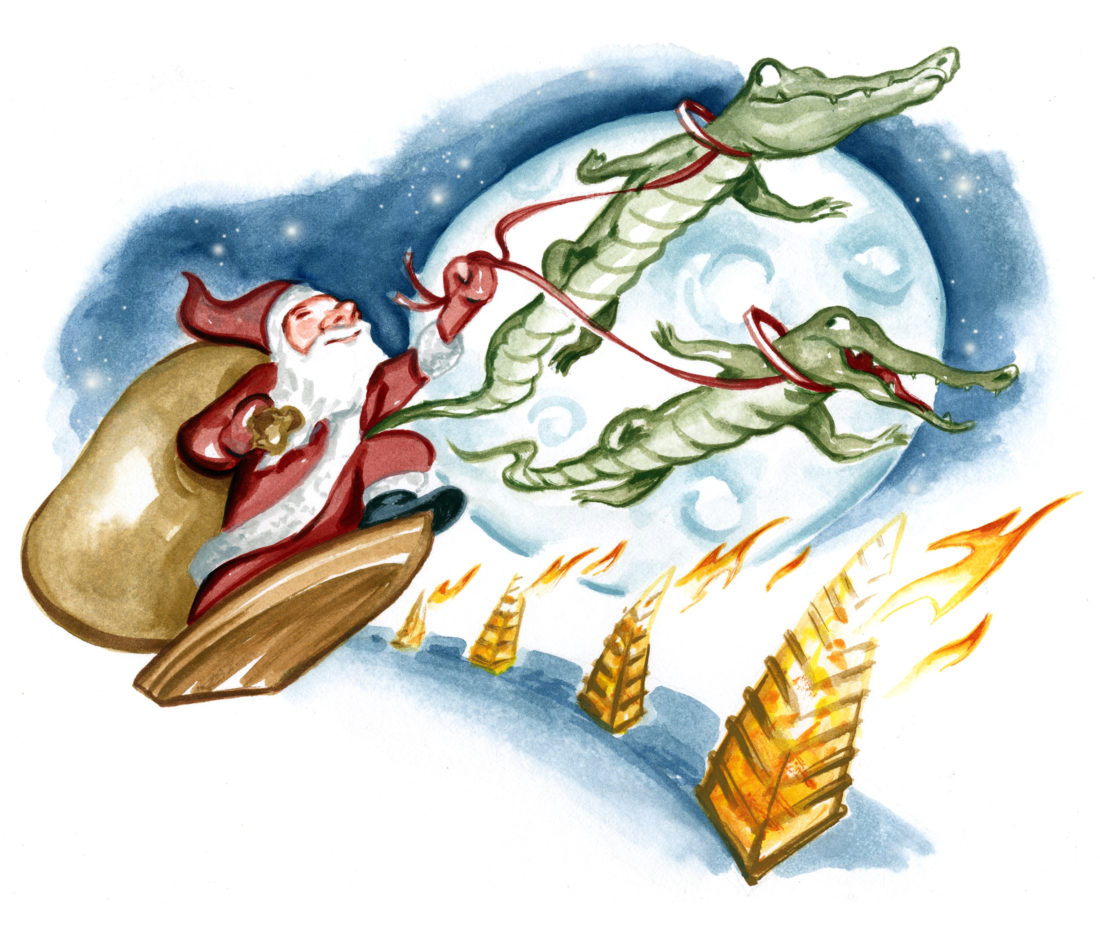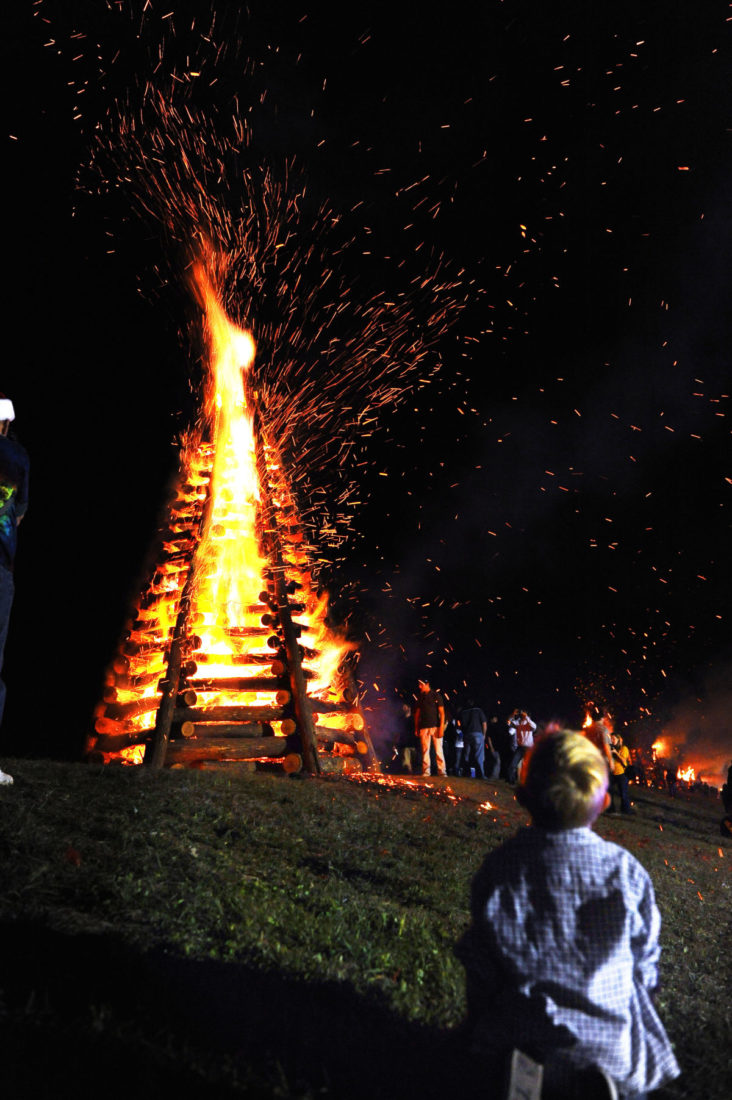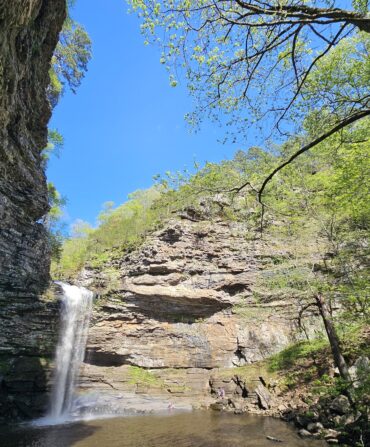Instead of leaving out cookies by the fireplace, Cajun Country welcomes Santa Claus with actual fire—a miles-long row of bonfires on the levees lining the Mississippi River. “As children, we were taught it was to light the way for Papa Noël to find his way into the swamplands,” says John Folse, the heralded chef and author of The Encyclopedia of Cajun & Creole Cuisine who grew up in St. James Parish, the epicenter of the tradition started by early German and French settlers.

When Folse was a child, the preparation began when school let out for Thanksgiving. “Boys from the six or seven houses in each direction would come and build the bonfire,” Folse says. Spaced about two hundred yards apart on the levee, their tepee-shaped wood creations grew to around twenty-five feet high.
Then came the main event. Beginning around noon Christmas Eve, families congregated and cooked, lit the fires, and feasted in the glow of roaring flames. Everyone in attendance brought a dish, including “specklebelly goose fricassees; smoked sausage jambalaya always covered with a ladle of white beans in cast iron pots; and thirty-pound suckling pigs,” Folse says. They drank plenty of ratafia, a concoction of brandy and local muscadines, blackberries, and sugar that had macerated since late summer in ten-gallon crocks. “Even young people could get a sip.”
But the center of the feast was always gumbo. “Every bonfire made a different kind,” Folse says. “My dad was a trapper, so my family’s was wild game—smoked rabbit, duck, or whatever came off the swamp floor pantry. By the time I was ten or twelve years old, I was already doing the big gumbo for our fire. Looking back, this is probably the reason I love to cook.”

As the early Cajun and Creole settlers did before them, when Folse and his family finished their meal, they walked to church for midnight mass, stopping at fires along the way to warm up and chat with neighbors.
“After church, the fires had died down, but we used the warmth of the coals to get back home,” Folse says. One more meal awaited. “The Réveillon, or ‘awakening,’ would be after midnight mass. We’d sit with family and have a nice supper, then all go to bed in hopes of getting a gift from Papa Noël.”
Today, hop on one of Gray Line New Orleans eggnog-fueled Christmas Eve tours, or cruise on your own along Louisiana highways 44 and 18 in and around Gramercy, Lutcher, and Paulina, to watch the bonfires blaze along the skyline, still resonating in generations of Louisianans’ holiday memories.









